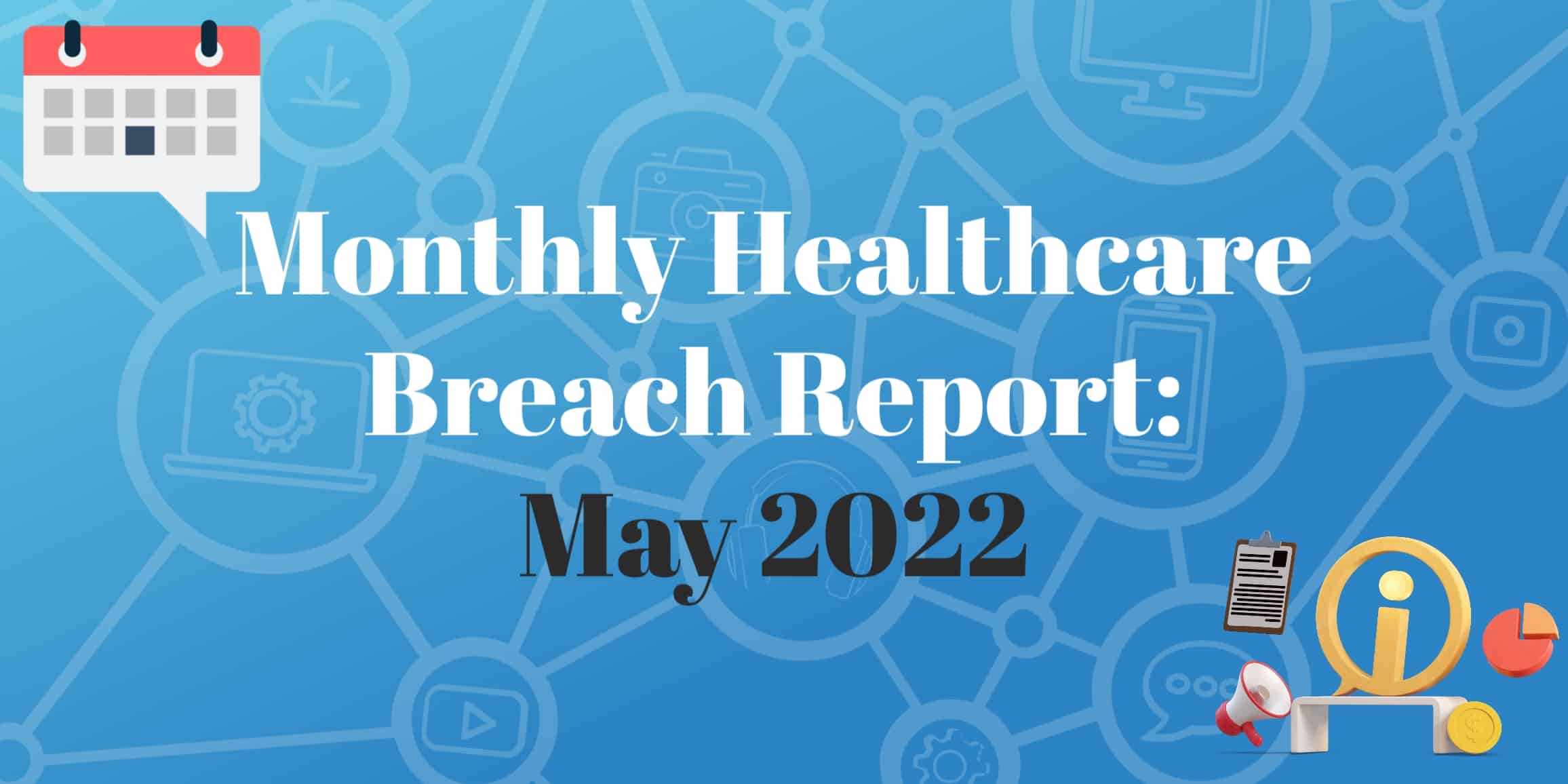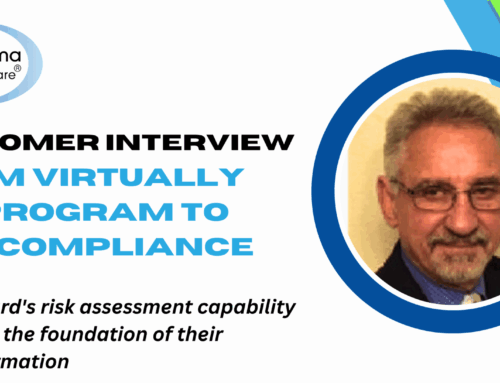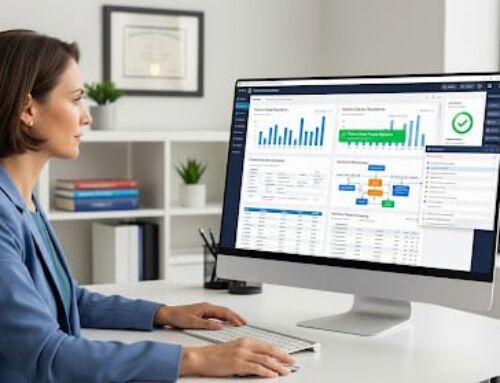Each month, we review healthcare breaches to determine the leading cause and how the incidents could have been prevented. We do so by examining the Office for Civil Rights (OCR) online breach portal. The OCR publicly posts healthcare breaches that affected 500 or more patients to ensure that all affected patients know their information could have been potentially compromised.
May was another prolific month for healthcare data breaches. Covered entities and business associates reported breaches affecting 4,285,997 records containing protected health information (PHI).
In May 2022, there were 96 large-scale breaches reported, most of which affected healthcare providers, with 48 incidents. These 48 incidents compromised the PHI of 1,024,081 individuals, representing 23.9% of patients affected by the May incidents.
Business associates reported 10 additional incidents, but those incidents accounted for more than half of all records breached. Business associate incidents affected 2,246,807 patients, representing 52.4% of patients affected.
Eleven health plans also reported incidents affecting 1,015,109 patients and representing 23.7% of affected patients. In May, 52 breaches resulted from hacking incidents. There were 13 breaches caused by unauthorized access or disclosure of PHI, three incidents involving theft, and one as the result of loss of PHI.
May 2022 Healthcare Breaches and Hacking
Cybercriminals are still busy as hacking continued its streak at the top of the list of causes of healthcare breaches in May 2022. The 52 hacking incidents reported in May affected the PHI of 4,088,180 patients. These 52 incidents represented 95% of the breached records reported during the month.
Entities affected by hacking:
- 40 healthcare providers, 867,465 patients, 21.2% of patients affected by hacking
- 7 business associates, 2,241,838 patients, 54.8% of patients affected by hacking
- 5 health plans, 978,877 patients, 23.9% of patients affected by hacking
Types of hacking incidents:
- 27 network server hacks,1,144,699 patients, 89.9% of patients affected by hacking
- 17 email hacks, 157,339 patients, 3.9% of patients affected by hacking
- 4 electronic medical records, 127,885 patients, 3.1% of patients affected by hacking
- 4 miscellaneous hacks, 128,050 patients, 3.1% of patients affected by hacking
How to Prevent Hacking Incidents
As hacking incidents have become the leading cause behind healthcare breaches for several years, minimizing your risk of being targeted is crucial.
Security Risk Assessments and Remediation
Security risk assessments (SRAs) are vital for security and compliance. An SRA aims to identify weaknesses and vulnerabilities in your security practices to prepare yourself against potential threats. Once SRAs have been conducted, it is essential to create remediation plans to address any identified deficiencies.
Employee Cybersecurity Training
A significant portion of hacking incidents results from phishing emails. This is why employee cybersecurity training is essential to your organization’s overall security posture. Employees should be trained on recognizing phishing attempts and what to do if they suspect an incident has occurred.
May 2022 Healthcare Breaches and Unauthorized Access or Disclosure
Incidents of unauthorized access or disclosures of PHI can occur in two ways – an authorized employee accesses PHI inappropriately, or an unauthorized party gains access to PHI. In May 2022, 11 incidents of unauthorized access or disclosure of PHI were reported. These incidents affected 20,391 patients, representing 1.3% of the breached records reported in May.
Entities affected by unauthorized access or disclosure:
- 2 business associates, 2,328 patients, 5.3% of patients affected by unauthorized access or disclosure
- 5 healthcare providers, 5,247 patients, 12% of patients affected by unauthorized access or disclosure
- 6 health plans, 36,232 patients, 82.7% of patients affected by unauthorized access or disclosure
Types of unauthorized access or disclosure:
- 6 paper/films incidents, 38,857 patients, 84.1% of patients affected by unauthorized access or disclosure
- 2 laptop incidents, 2,776 patients, 3.9% of patients affected by unauthorized access or disclosure
- 2 email incidents, 4,511 patients, 6.3% of patients affected by unauthorized access or disclosure
- 1 desktop computer incident, 1,370 patients, 3.1% of patients affected by unauthorized access or disclosure
- 2 multiple cause incidents, 1,101 patients, 2.5% of patients affected by unauthorized access or disclosure
How to Prevent Unauthorized Access or Disclosure
As we mentioned, there are two ways in which unauthorized access or disclosures occur – inappropriate employee access or unauthorized access by another entity.
Policies and Procedures and Employee Training
HIPAA policies and procedures are essential to HIPAA compliance as they guide employees on what is appropriate. HIPAA requires employee use and disclosure of PHI to be limited to the minimum necessary to perform their job functions. Your policies and procedures should dictate this, and employees should be trained on the policies and procedures to be aware of their obligations.
User Authentication, Access Controls, and Audit Controls
To ensure adherence to the minimum necessary standard, you must implement user authentication, access controls, and audit controls. User authentication provides unique login credentials for each employee, while access controls enable administrators to designate different PHI access levels using those unique login credentials. Also, based on the implementation of unique login credentials, audit controls track access to data to ensure that PHI is accessed appropriately by each employee.
May 2022 Healthcare Breaches and Other Causes
In May 2022, two other types of breaches were reported to OCR that affected a total of 154,010 individuals, representing 3.6% of the breached records reported in May.
- 3 healthcare providers reported thefts of laptops or paper/films, 151,369 patients, 98.3% of the total patients affected by other causes
- 1 business associate reported the loss of paper/films, 2,641 patients, 1.7% of the total patients affected by other causes











